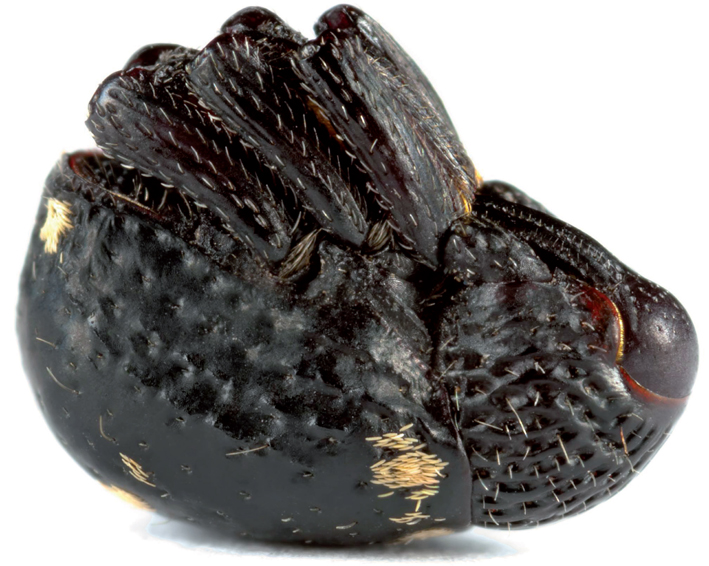Notes on the distribution and host plant of Ocladius paucisquamis Meregalli & Colonnelli, 2006 (Curculionidae: Brachycerinae: Erirhinini) in Israel
Keywords:
Coleoptera, Curculionidae, Brachycerinae, beetles, weevils, Asia, Palearctic, Egypt, Israel, Jordan, Middle East, biology, desert, distribution, endemic, host plant, Chenopodiaceae, HaloxylonAbstract
Ocladius paucisquamis Meregalli & Colonnelli, 2006 is an endemic of Israel and Jordan, and the only species of this genus known from Israel so far. The original description states that its distributional range includes the Negev Desert in Israel and southern Jordan. Since 2006, numerous specimens have been collected throughout Israel by us and our colleagues and friends (e.g. Oren Shelef, Elli Groner and Tal Mei-Dan), and now data about its distribution in Israel seem to be quite complete. Ocladius paucisqamis is widely distributed throughout the Negev Desert, from the Southern Coastal Plain to Elat, the Judean Desert, and along the Jordan Valley from the southern Arava Valley, along the coast of the Dead Sea, as far north as Mt. Sartava. It possibly occurs also in the Sinai Peninsula (Egypt), or at least in its northern and eastern parts. This weevil occurs in different types of desert biotopes such as stony desert, sand and loess, dry riverbeds, but never in sandy dunes. During the daytime adults are frequently found under stones, laying on their side and feigning dead, with rostrum and tibia contracted and hidden in special channels of prosternum and femora. Usually two to five individuals occur in close proximity, but sometimes they are found in aggregations of tens of specimens. It is a very common species, albeit rarely observed due to the nocturnal activity of the adults. Specimens have often been found under various Chenopodiaceae (Salsola spp., Haloxylon spp.), as well as under Caryophyllaceae (Gymnocarpos) and Zygophyllaceae (Zygophyllum spp.).
Cite as: Friedman, A.-L.-L. & Wizen, G. 2019. Notes on the distribution and host plant of Ocladius paucisquamis Meregalli & Colonnelli, 2006 (Curculionidae: Brachycerinae: Erirhinini) in Israel. Israel Journal of Entomology 49 (1): 131–135.
DOI: 10.5281/zenodo.3594837
http://zoobank.org/References/145813B1-678D-4275-A666-908074A258BC

Downloads
Published
Issue
Section
License
Copyright (c) 2019 Israel Journal of Entomology

This work is licensed under a Creative Commons Attribution-NonCommercial-NoDerivatives 4.0 International License.


